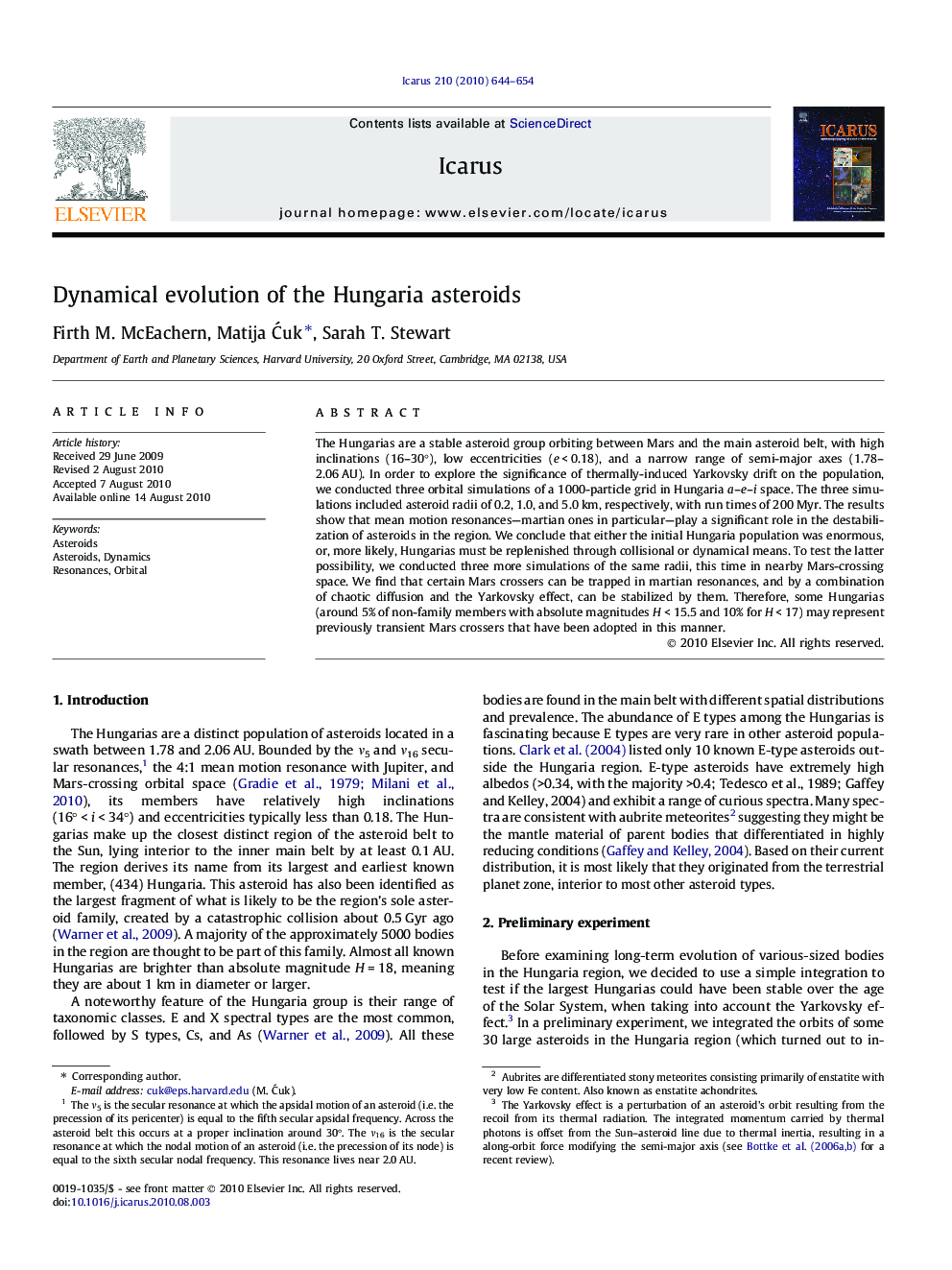| Article ID | Journal | Published Year | Pages | File Type |
|---|---|---|---|---|
| 1773616 | Icarus | 2010 | 11 Pages |
The Hungarias are a stable asteroid group orbiting between Mars and the main asteroid belt, with high inclinations (16–30°), low eccentricities (e < 0.18), and a narrow range of semi-major axes (1.78–2.06 AU). In order to explore the significance of thermally-induced Yarkovsky drift on the population, we conducted three orbital simulations of a 1000-particle grid in Hungaria a–e–i space. The three simulations included asteroid radii of 0.2, 1.0, and 5.0 km, respectively, with run times of 200 Myr. The results show that mean motion resonances—martian ones in particular—play a significant role in the destabilization of asteroids in the region. We conclude that either the initial Hungaria population was enormous, or, more likely, Hungarias must be replenished through collisional or dynamical means. To test the latter possibility, we conducted three more simulations of the same radii, this time in nearby Mars-crossing space. We find that certain Mars crossers can be trapped in martian resonances, and by a combination of chaotic diffusion and the Yarkovsky effect, can be stabilized by them. Therefore, some Hungarias (around 5% of non-family members with absolute magnitudes H < 15.5 and 10% for H < 17) may represent previously transient Mars crossers that have been adopted in this manner.
